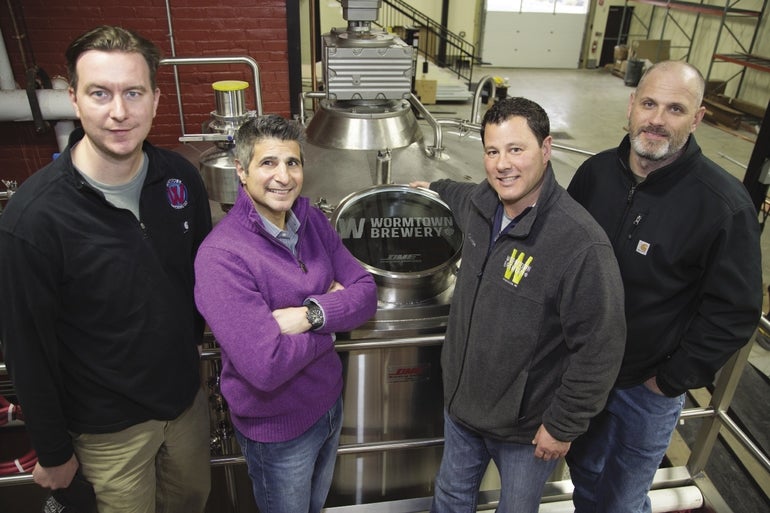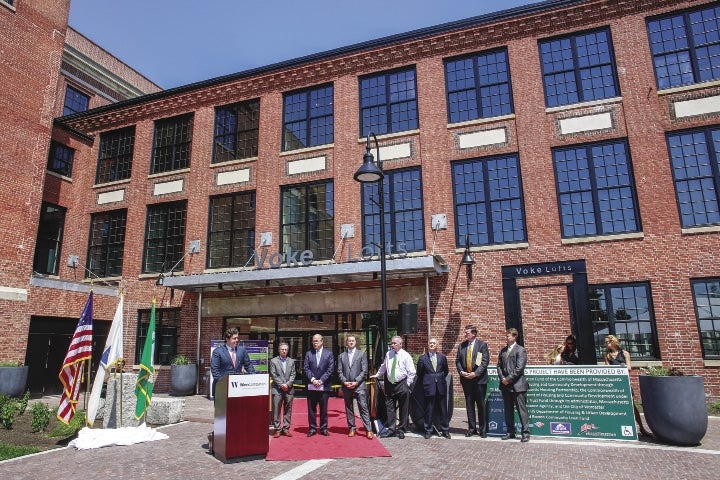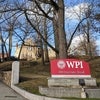THEN TO NOW: With a nod to city's industrial heyday, Worcester developers mix modern needs into past architectures
Whether it's a former car dealership that now houses two of Worcester's well-trafficked restaurants, or a former vocational school that contains the city's newest, high-line loft apartments, Worcester is experiencing a growing interest from developers to renovate rather than raze some of the city's historic buildings.
The redevelopment of historic and architecturally significant buildings allows a city to retain some of its character while offering a unique selling point to attract businesses and residents. However, these projects carry with them unique challenges to go with their unique benefits.
“It would be much easier in most cases to start from a green field and build up,” said Gilbert Winn, managing principal of WinnDevelopment, which redeveloped the old Worcester Vocational Technical High School on Salisbury Street into the Voke Lofts apartments.
The biggest hurdle is cost. It's simply more expensive to update historic buildings to today's standards and maintain their historic value than it is to build new, according to Winn. There are requirements to keep windows and key architectural components intact, Winn said. Often, that means custom-ordering materials at higher costs.
Even the staging and preparation work is expensive, said Robert Branca of Branded Management Group of Worcester, which redeveloped 72 and 60 Shrewsbury St., as well as the Harrington Corner building at the corner of Main and Front streets. Once you open up a building to add things such as elevators and other elements to bring it up to code, you never know what you're going to find, he said.
“You have to care for the facility and you have to care for its history… and that takes money and it takes time and it takes energy,” said David Fields, a managing partner with Wormtown Brewery, who has been working with Branca to develop Wormtown's new 12,500-square-foot location at 72 Shrewsbury St. (Wormtown plans to begin brewing at the site this month.)
Balancing past with present
When tackling such projects, developers must balance maintaining the historical nature of a building, such as its exterior, while adding modern requirements such as handicapped access, Winn said.
“The challenge is really to serve many different masters and do it in a way where you are checking all the boxes for regulation and the rules, but at the end of the day, have something that is attractive and usable,” he said.
These additional costs can be somewhat offset by federal tax credits equal to 20 percent of the redevelopment costs, Winn said. Often, that's just enough to break even with the cost of new construction, he said, but a state program allows developers to receive another 20 percent back in tax incentives. That's where the costs begin to make sense, Winn said.
“It's a big boon in places like Massachusetts, New York or Virginia that have this state credit,” he said.
But the benefits extend beyond the bottom line, said Branca, allowing for the creation of a unique building that draws potential tenants.
“They're unique and that draws attention and a sense of place,” Branca said. “If (businesses) are in a landmark building, it raises the stature of that tenant and gives them a higher profile and lends them a higher stature … their customers are interested as much in the space as their service.”
Branca's building at 72 Shrewsbury St. also houses two restaurants (Volturno and Sweet), a retail shop and offices. Fields said Wormtown had been looking at historic sites with an eye toward space, and when they saw the former Buick dealership, they signed on immediately, saying it was “a really, really cool spot that would help create an environment and atmosphere that was supportive of the brand” while also helping the company's image in Worcester.
“It is not just a Wormtown thing, it is not just a Shrewsbury Street thing but it is a Worcester thing … being part of something that energizes the city of Worcester is very important to us,” Fields said.
That's the intangible “sense of place” that these historic renovations bring to the city and individual neighborhoods, added Stephen Rolle, Worcester's planning director.
“It really is vital for us to retain these buildings in that they create a sense of place and uniqueness and they are what makes a community unique,” he said. “It is really important, particularly to those areas where there are a number of those buildings remaining and especially when those buildings are a strong contributor to the feeling of the neighborhood.”
Broader benefit
These buildings can benefit the entire city, said Branca, who has seen this play out in Providence's east side.
“People love (historic) buildings; they love to work in them and they love to live around them,” he said. “Name any city that has a historic district; they tend to be the place (where) rents are higher and they are more occupied.”
For the ultimate test of whether a historic renovation can be done successfully and whether it's desirable, both Winn and Branca pointed to their most recent projects.
Alluding to now fully occupied Voke Lofts, Branca said: “From both the developer and the tenants, people voted with their dollars. There are plenty of new apartments and condos to move into, but that place is full.”
This has attracted renewed interest in historic redevelopment in Worcester, the developers said, specifically the vacant former Worcester County courthouse in Lincoln Square, which has received proposals from three different companies.
Rolle has high hopes for more historic renovations in Worcester.
“I think we are going to see that more and more now that we see examples of what places look like after they are transformed,” he said. “While developers may feel they are taking a risk now, there are proven examples out there that this does work and can work in Worcester.” n











0 Comments